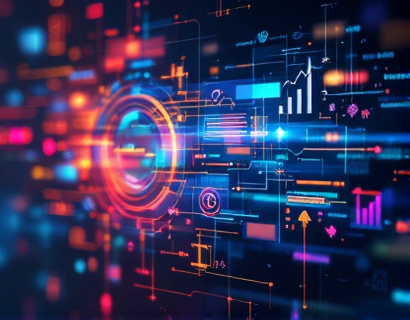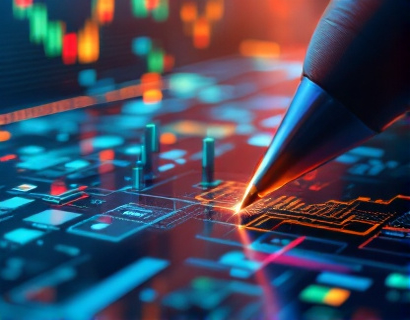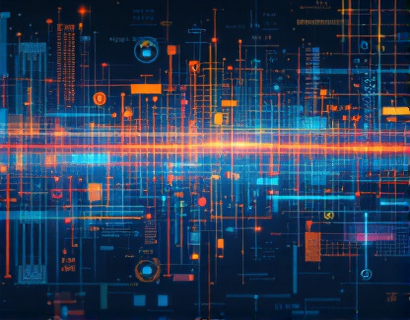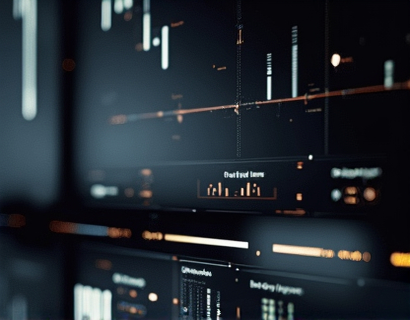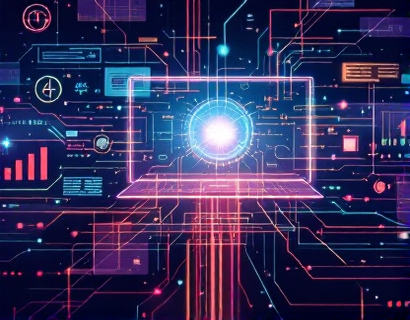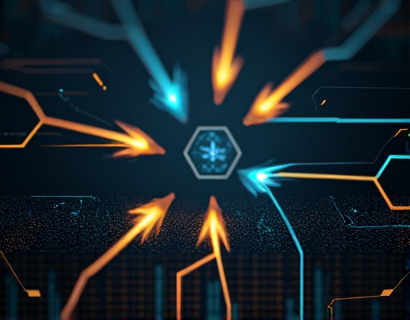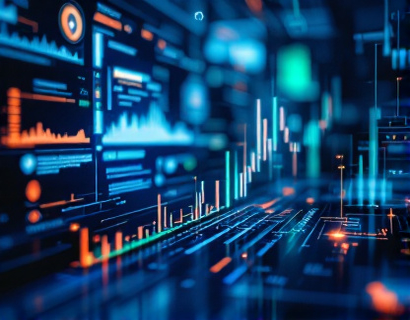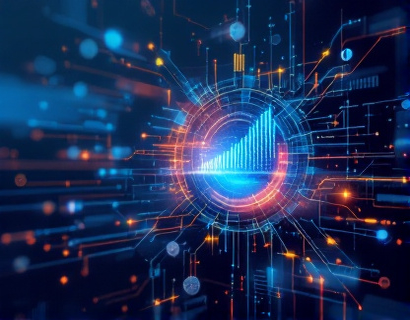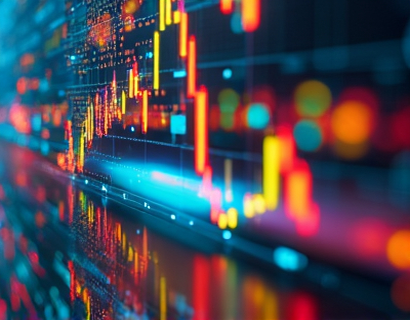Blockchain for Art: Revolutionizing the Preservation and Tracking of Historical Artifacts with Decentralized Solutions
The art world is on the cusp of a transformative era, driven by the integration of blockchain technology. This innovative approach promises to revolutionize the preservation and tracking of historical artifacts and artworks, ensuring their authenticity and provenance are verifiable and secure. By leveraging decentralized solutions, blockchain technology fosters trust and collaboration among collectors, museums, and cultural institutions, safeguarding our shared cultural heritage for future generations.
Blockchain, at its core, is a distributed ledger technology that records transactions across multiple computers in such a way that the registered transactions cannot be altered retroactively. This inherent characteristic makes it an ideal tool for the art world, where the authenticity and provenance of artworks are paramount. Traditional methods of verifying an artwork's history are often cumbersome, prone to fraud, and lack transparency. Blockchain offers a decentralized, immutable, and transparent alternative.
Verifying Authenticity and Provenance
The authenticity of an artwork is crucial for its value and legitimacy. Blockchain technology can provide an unbreakable chain of custody, documenting every transaction and ownership change since the artwork's creation. Each block in the chain contains a cryptographic hash of the previous block, along with transaction data, making it virtually impossible to alter past records without detection. This ensures that the provenance of an artwork is tamper-proof and verifiable by anyone with access to the blockchain.
For instance, when an artist creates a piece, the blockchain can record the creation date, the artist's signature, and any relevant certificates of authenticity. As the artwork changes hands, each transaction is logged on the blockchain, creating a comprehensive and transparent history. Collectors and institutions can easily verify the artwork's authenticity by checking the blockchain records, reducing the risk of purchasing counterfeit pieces.
Enhancing Trust and Collaboration
The art market is often characterized by a lack of trust and transparency, with numerous instances of fraud and disputes over ownership. Blockchain technology addresses these issues by providing a trustless environment where parties do not need to rely on intermediaries to verify transactions. This decentralized approach fosters collaboration among various stakeholders, including collectors, dealers, museums, and cultural heritage institutions.
For example, a museum acquiring a new piece can use blockchain to verify the artwork's history, ensuring it meets ethical and legal standards. This transparency builds trust among all parties involved, encouraging more collaborative efforts in preserving and showcasing cultural treasures. Artists, too, benefit from blockchain by gaining greater control over their work and receiving fair compensation through smart contracts that automatically execute transactions when predefined conditions are met.
Safeguarding Cultural Heritage
The preservation of cultural heritage is a global concern, with many historical artifacts at risk due to conflict, natural disasters, and inadequate storage conditions. Blockchain technology can play a pivotal role in safeguarding these treasures by providing a secure and immutable record of their existence and location. This is particularly important for artifacts that have been displaced or are at risk of being lost forever.
By recording the location and condition of artifacts on the blockchain, cultural institutions can create a global registry that is accessible to all. This registry can help track the movement of artifacts, ensuring they are not sold on the black market or damaged. In cases of conflict or natural disasters, the blockchain can serve as a critical resource for identifying and recovering lost or stolen items, aiding in their return to their rightful owners or institutions.
Smart Contracts for Art Transactions
Smart contracts, self-executing contracts with the terms directly written into code, are another powerful application of blockchain in the art world. These contracts can automate and enforce the terms of art transactions, reducing the need for intermediaries and minimizing the risk of disputes. For instance, a smart contract can be programmed to release payment to a seller only after the buyer confirms receipt and verification of the artwork's authenticity.
This not only streamlines the transaction process but also ensures that all parties adhere to the agreed terms. Smart contracts can also include clauses for insurance, maintenance, and exhibition rights, providing a comprehensive legal framework for art ownership and management. By leveraging smart contracts, the art market can become more efficient, transparent, and secure.
Challenges and Considerations
While the potential benefits of blockchain in the art world are significant, there are also challenges and considerations that need to be addressed. One major challenge is the technical complexity of blockchain technology, which may be a barrier for some institutions and individuals. Education and training are essential to ensure widespread adoption and effective use of blockchain solutions.
Another consideration is the scalability and environmental impact of blockchain networks. Some blockchain platforms, particularly those using proof-of-work consensus mechanisms, consume substantial energy resources. The art community must advocate for and adopt more sustainable blockchain solutions to minimize environmental footprints.
Additionally, the integration of blockchain with existing art market infrastructure requires careful planning and collaboration. Standardization of data formats and protocols is crucial to ensure interoperability between different blockchain platforms and traditional systems. Industry-wide cooperation is necessary to develop comprehensive and universally accepted standards.
Case Studies and Success Stories
Several initiatives and projects are already demonstrating the potential of blockchain in the art world. One notable example is the use of blockchain to create digital certificates of authenticity for artworks. These certificates, stored on the blockchain, provide a verifiable and tamper-proof record of an artwork's history and ownership. This has been particularly useful for high-value pieces where authenticity is critical.
Another successful application is the creation of blockchain-based marketplaces for art, where artists and collectors can transact directly with greater transparency and security. These platforms use smart contracts to handle payments and ensure that all terms of the sale are met, reducing the risk of fraud and disputes.
Museums and cultural institutions are also exploring blockchain for provenance research and collection management. By digitizing and blockchain-izing their collections, these institutions can provide deeper insights into the history and context of their artifacts, enhancing educational and research opportunities.
Future Prospects
The future of blockchain in the art world is promising, with ongoing developments poised to further enhance its capabilities. As blockchain technology matures, we can expect more sophisticated applications and broader adoption across the industry. The integration of blockchain with other emerging technologies, such as the Internet of Things (IoT) and artificial intelligence (AI), could lead to innovative solutions for art preservation and management.
For instance, IoT devices can monitor the environmental conditions of stored artifacts, with data recorded on the blockchain to ensure optimal preservation. AI can analyze blockchain data to identify patterns and trends, aiding in the detection of fraudulent activities and providing insights for collection curation. The combination of these technologies can create a more robust and intelligent system for managing cultural heritage.
Moreover, the growing awareness of the importance of cultural preservation and the increasing demand for transparency in the art market will continue to drive the adoption of blockchain solutions. As more stakeholders recognize the benefits of blockchain, the art world can look forward to a future where cultural treasures are better protected, more accessible, and truly preserved for generations to come.




